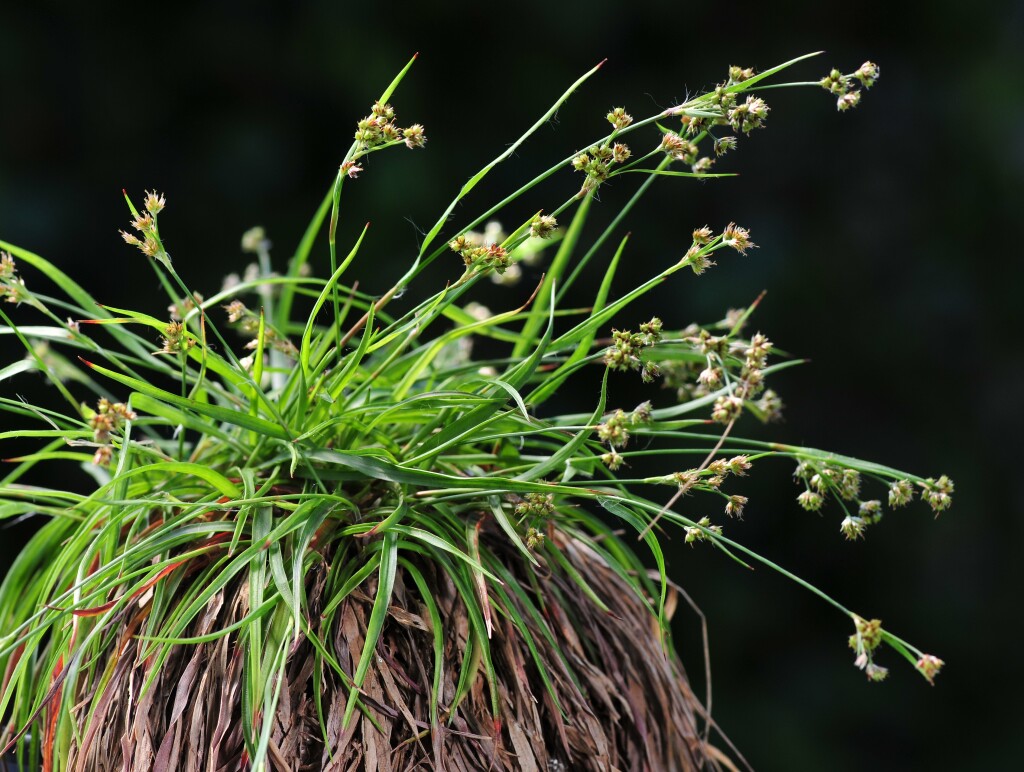Luzula meridionalis var. flaccida
(Buch.) Nordensk.Plants rarely bulbous at base. Leaf margins rather sparsely ciliate. Tepals 2–3 mm long, pale brown with rather broad pale margins; capsule pale, yellow-brown, subequal to, or minutely exceeding tepals. Flowers mainly Sep.–Feb.
LoM, Wim, GleP, Brid, VVP, VRiv, GipP, OtP, WaP, Gold, CVU, GGr, DunT, NIS, EGL, EGU, WPro, HSF, HNF, OtR, Strz, MonT, HFE, VAlp. All states except WA, NT. The most abundant of the three varieties in Victoria, generally occurring in moist forests where common (e.g. Otway Range, East Gippsland) and ascending to the subalps and alps where it is an occasional component of shrubby thickets, grassland and Eucalyptus pauciflora woodlands.
Forms with contracted inflorescences may superficially resemble L. modesta, but are distinguishable from this mostly alpine species by the absence of rhizomes and the smaller seeds with relatively longer caruncles. Plants growing at high-altitudes in exposed, rocky situations may be difficult to distinguish from L. novae-cambriae if seeds are not available. Edgar (1975) further recognizes two informal groups within var. flaccida: (a) 'short anther'-typically with the inflorescence reduced, sometimes to a single cluster; tepals with narrow, pale brown central stripe; anthers c. 0.4 mm long. (b) 'long anther'-with several flower clusters in inflorescence; tepals with conspicuous reddish or dark brown central stripe; anthers c. 0.9 mm long. However, occasional plants of intermediate condition occur.
Walsh, N.G. (1994). Luzula. In: Walsh, N.G.; Entwisle, T.J., Flora of Victoria Vol. 2, Ferns and Allied Plants, Conifers and Monocotyledons, pp. 233–238. Inkata Press, Melbourne.
 Spinning
Spinning
